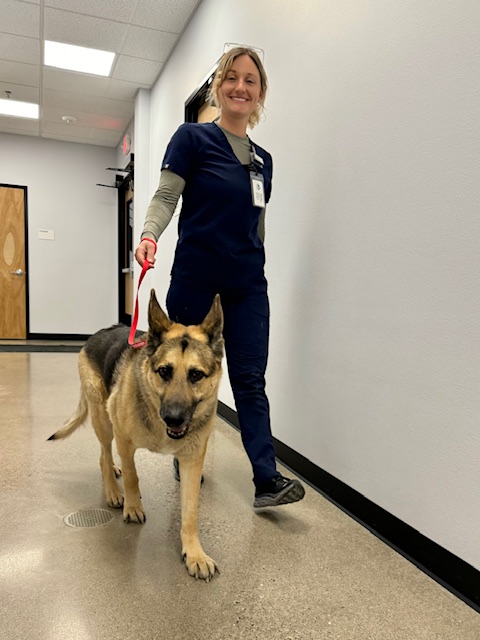
1. Dr. Perry, you are the Co-Founder of CASTR Alliance, can you give us a brief snapshot of CASTR, why you started your CRO business, and your background?
Both I and my CASTR business partner, Jessica Bertout, are veterinary clinician scientists (DVM/PhD trained) with the professional goals of both caring for our veterinary patients as well as advancing care options for animals and people alike. Historically, a large portion of clinical trials in veterinary patients have been performed within the university setting. In geographic regions where veterinary universities are not located the availability of clinical trial options is limited despite the presence of large numbers of potentially eligible animals. Our region, the Pacific Northwest of the United States, is one particular region where access to veterinary universities is limited yet the pet population is large and growing. Seeing this paucity of clinical trial access in our region, we built CASTR to provide clinical research services to sponsors interested in running veterinary studies and we have partnered with a network of active veterinary specialty hospitals to enroll patients in those studies. Thanks to our background in clinical trial design and management, we are able to provide “turn-key” clinical trial management to sponsors that may not otherwise have the bandwidth or expertise to conduct veterinary studies.
2. CASTR is specialized in conducting clinical studies in companion animal patients; how do veterinarian trials differ from human clinical trials?
Similar to human clinical trials, veterinary trials often involve testing novel therapeutics and/or devices in patients with spontaneous diseases such as cancer. Veterinary trials are unique in the fact that in many situations there is not standard of care treatment for the diseases that are being treated. Therefore, clinical trials can be performed in “treatment naïve” patients early-on in the drug’s development, which is rarely the case in human clinical trials. This allows for testing of novel treatments in a setting where benefit is most likely to be demonstrated. Additionally, because the lifespan of veterinary patients is typically shorter and the rate of disease progression is typically faster, clinical trials in veterinary patients can often be performed in shorter periods of time relative to clinical trials in people. Lastly, a number of diseases that may be rare in people have a high incidence in pet populations (e.g. osteosarcoma, hemangiosarcoma, etc.) and therefore study patient recruitment can occur more rapidly than would be possible in human trials.
 3. CASTR is running the open-label, pilot clinical trial with Vivesto’s veterinary oncology product Paccal Vet. What is the set up (design) for this trial and how do you work with the clinicians to ensure you follow the study protocol and meet the ethical and regulatory requirements?
3. CASTR is running the open-label, pilot clinical trial with Vivesto’s veterinary oncology product Paccal Vet. What is the set up (design) for this trial and how do you work with the clinicians to ensure you follow the study protocol and meet the ethical and regulatory requirements?
The current clinical trial evaluating the use of Paccal Vet in dogs with splenic hemangiosarcoma is a pilot study to evaluate the potential efficacy and tolerability of this drug in dogs with spontaneous hemangiosarcoma – a common and invariably fatal cancer in dogs. The study has been designed to follow VICH-GCP (Good Clinical Practice) guidelines. These guidelines mirror the standards set for clinical trials in humans and seek to ensure ethical and accurate conduct of clinical trials for future regulatory approval. This pilot study is a planned prequel to a Pivotal Trial designed to further test safety and efficacy in a larger population of dogs for FDA approval if a reasonable expectation of efficacy and safety are observed in the pilot study.
4. Up to 46 patients with splenic hemangiosarcoma following splenectomy are planned to be included in the Paccal Vet study and recently, in March 2024, the first dog was dosed. Can you describe the process to find and enroll patients to this kind of trial as well as the interest amongst dog owners?
The first patient in the study was enrolled after undergoing a splenectomy for a splenic mass found on ultrasound when being evaluated for an unrelated benign condition. At the time of the diagnosis of a “splenic mass”, the pet parent was made aware of the Paccal Vet clinical trial through their veterinary oncologist (also a Principal Investigator on the study) prior to surgery and that the trial would be an option should the splenic mass be confirmed to be hemangiosarcoma. For this particular pet parent, knowing the trial was available helped make the decision to proceed with surgery, knowing there would be an option for a fully-funded clinical trial for adjuvant treatment should the mass be confirmed to be hemangiosarcoma. In addition to regional veterinary oncologists being aware of the clinical trial, announcements to general practitioners and veterinary emergency clinics have been provided to further raise awareness of the study. In many cases, it is the general practitioner or emergency veterinarian who is the first to diagnose these hemangiosarcoma patients, and also often the first to provide information on prognosis and treatment options to the pet parents, even before the pet parent consults with a veterinary oncologist.
5. The number of companion animals in the US is constantly growing and the medical need for more effective veterinarian drugs is rising, especially in the oncology field. How do you perceive the current interest among companion animal owners and veterinarians to introduce more advanced (and expensive) treatments?
In my experience as a veterinary oncologist and surgeon, there is an ever-growing need and public interest – in addition to veterinary professional interest – in advancing care for all veterinary patients. This is particularly the case for cancer care. Animals are living longer and are therefore developing cancer in old age at an increased rate. With more money being spent on veterinary care and the ongoing availability of insurance in companion animals, the desire for advanced care and treatment is likely to continue to grow.


